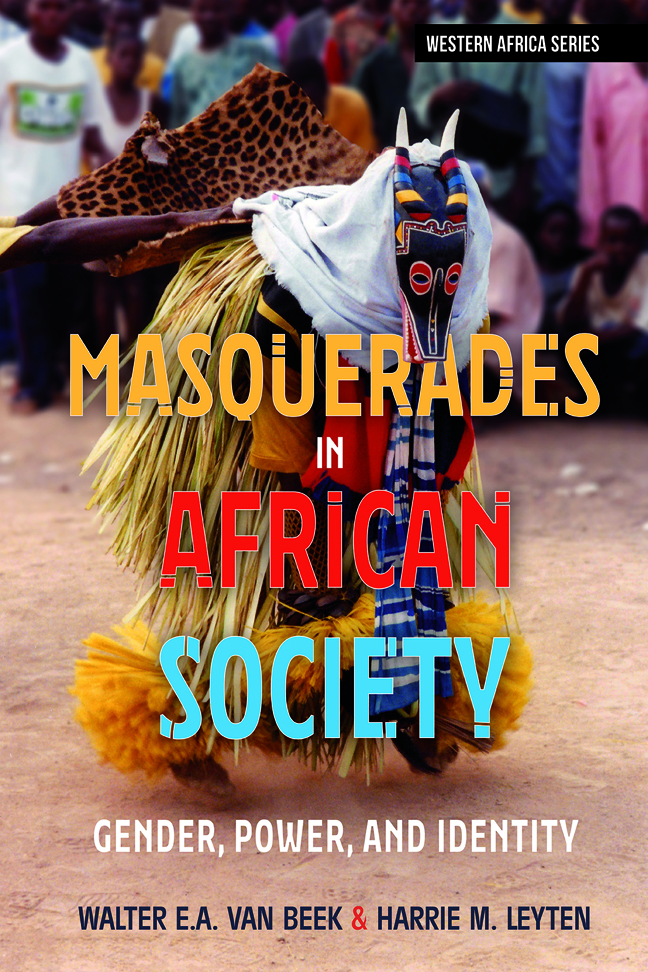Book contents
- Frontmatter
- Dedication
- Contents
- List of Illustrations
- Acknowledgements
- Introduction
- The Mask Crescent: Distribution of Masks and Masking in Africa
- 1 Mask Distribution and Theory
- 2 What is a Mask?
- 3 Masks and Masculinity: Initiation
- 4 Secrecy and Power
- 5 Death and its Masks
- 6 Women: Pivot of the Masks
- 7 Masks and Politics
- 8 Masks and the Order of Things
- 9 Masks and Modernity
- 10 Memories of Power, Power of Memories
- 11 Conclusion
- Bibliography
- Sources for Ethnographic Cases
- Picture Credits
- Index
10 - Memories of Power, Power of Memories
Published online by Cambridge University Press: 22 February 2024
- Frontmatter
- Dedication
- Contents
- List of Illustrations
- Acknowledgements
- Introduction
- The Mask Crescent: Distribution of Masks and Masking in Africa
- 1 Mask Distribution and Theory
- 2 What is a Mask?
- 3 Masks and Masculinity: Initiation
- 4 Secrecy and Power
- 5 Death and its Masks
- 6 Women: Pivot of the Masks
- 7 Masks and Politics
- 8 Masks and the Order of Things
- 9 Masks and Modernity
- 10 Memories of Power, Power of Memories
- 11 Conclusion
- Bibliography
- Sources for Ethnographic Cases
- Picture Credits
- Index
Summary
‘History does not repeat itself, but it often rhymes.’
(attributed to Mark Twain)Arrest that mask!
The scene is the Basse Casamance in Senegal, south of The Gambia, a region dominated by two ethnic groups, the Manding and Jola; the setting, surprisingly, is a court room. The case involves a confrontation between the state and a mask and occurred in 1988 in Sédhiou, a town on the Casamance River. A kankurang mask that accompanied a dancing crowd happened to annoy the Assistant Prefect – it actually annoyed him quite seriously. The official was vexed to the point that he had the police arrest the mask and take it to the police station, where the police, as the anthropologist Ferdinand de Jong put it, ‘took the unprecedented step of undressing him’. Word got around and the next morning an angry crowd gathered at the football stadium and decided to send a delegation to the police station, demanding the immediate release of the mask. As fate would have it, the Assistant Prefect arrived with his car at that time, and a riot ensued; the car was set on fire, police officers were stoned, guns were fired, and the crowd attacked the homes of the policemen.
The story was also that, adding insult to injury, the police asked two girls to identify the masker […] girls! The meeting in the stadium was for initiates only, and many showed up bare-chested, as if in the sacred forest. In the ensuing debates among the many Manding involved, one policeman who was Wolof gradually became the scapegoat; after all, the Assistant Prefect was a fellow Manding and initiated. The case was tried quickly, to appease a thoroughly incensed populace, and the rioters who stood trial received light suspended sentences. The officials in question were transferred to other towns, a clear measure to defuse the situation. So in the end the cultural obligation to defend the secrecy of the mask was more or less confirmed and sustained by the state.
This clash shows the power of a local group with masks vis-à-vis the state, through a series of factors. One major issue is secrecy, a discourse shared to some extent by the government. Another point is the value of masks as a self-regulating force for order, but such a local order does not always run parallel to public priorities, at least as defined by national functionaries.
- Type
- Chapter
- Information
- Masquerades in African SocietyGender, Power and Identity, pp. 309 - 332Publisher: Boydell & BrewerPrint publication year: 2023

